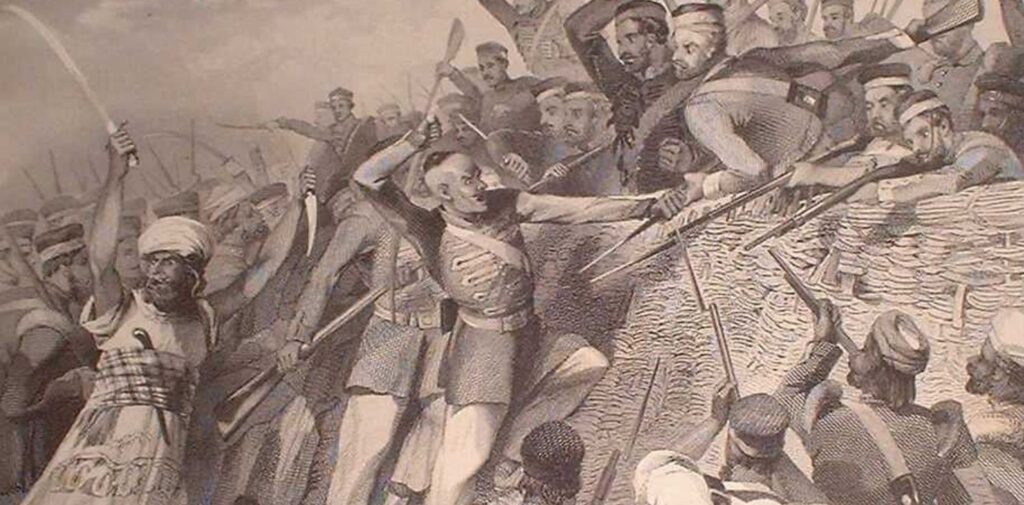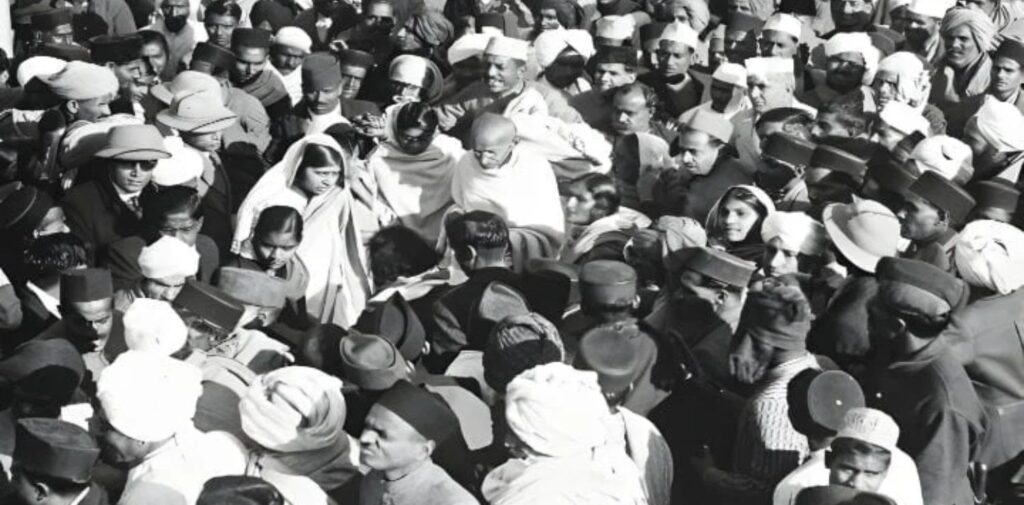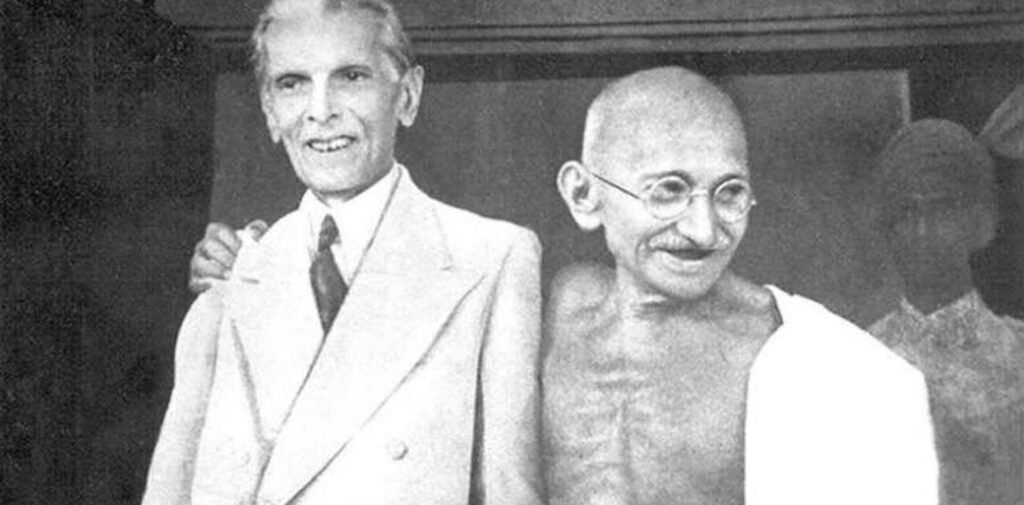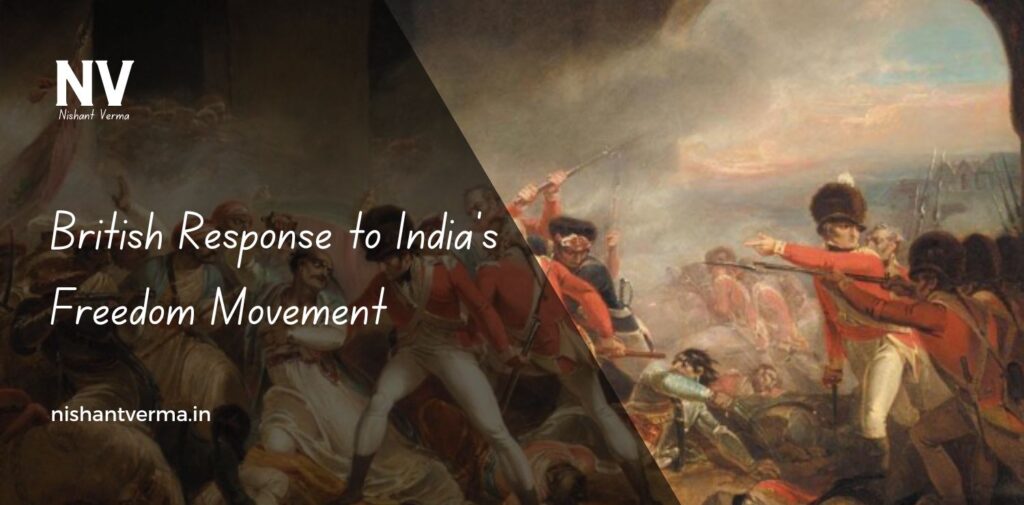India’s struggle for independence was long and difficult. For more than two hundred years, the British ruled India. But as the years went by, more and more people in India began to demand freedom. The Indian Freedom Movement was made up of many different groups, leaders, and ideas, but the main goal was the same – to drive the British out of India and make it an independent country.
The British government, which was very powerful at the time, didn’t want to lose control of India. As the freedom movement grew stronger, the British response was harsh and forceful. In this article, we will explore how the British reacted to India’s growing desire for independence and how their actions changed over time.
Early British Responses: Ignoring the Demand for Freedom
When the first signs of resistance to British rule started appearing, the British did not take them very seriously. In the early 19th century, the British thought that India was still far from being capable of running its own government. The Indian people, in their view, were unorganized and lacked the strength to challenge their rule.

The Revolt of 1857: The First Major Challenge
One of the first major challenges to British rule was the Indian Rebellion of 1857, also known as the Sepoy Mutiny. Indian soldiers, called sepoys, working in the British army, rebelled against their British officers. They were unhappy with the way they were treated and with the introduction of new rules that went against their religious beliefs.
The rebellion spread quickly across North India and turned into a large-scale conflict. However, the British crushed the revolt with great force. Thousands of Indians were killed, and many cities were destroyed. After the revolt, the British government took direct control of India, ending the rule of the British East India Company. Despite the brutal suppression, the rebellion showed that there was a deep desire for freedom among the Indian people.
The Rise of Indian Nationalism
After the failure of the 1857 revolt, Indians became even more determined to gain their independence. Over time, nationalist feelings grew stronger, and many Indians began to demand greater rights. The British initially responded by trying to divide and rule, encouraging differences among the Indian people. They also tried to give limited reforms, but this wasn’t enough to stop the desire for full independence.
Formation of the Indian National Congress (INC)
In 1885, the Indian National Congress (INC) was formed. The INC was a political party that aimed to give Indians a voice in the government. It started as a moderate group that believed in peaceful methods to achieve independence. Initially, the British were not worried about the INC, as they thought it would not cause any major problems. However, the Congress began to demand more rights for Indians, which made the British government uneasy.
The British Respond to Growing Demands
By the early 20th century, Indians were becoming more and more active in their fight for independence. Many leaders, like Bal Gangadhar Tilak, Lala Lajpat Rai, and Subhas Chandra Bose, were using newspapers and speeches to raise awareness about the need for freedom. The British government continued to ignore or downplay these demands.
However, the British started to feel the pressure as people became more united and active. They had two main responses to the growing demands for independence:
- Repression and Violence: As the freedom movement grew stronger, the British responded with force and violence. They often used the police and military to stop protests and to control the people.
- Jallianwala Bagh Massacre (1919): One of the most shocking examples of British brutality was the Jallianwala Bagh Massacre. On April 13, 1919, a large crowd of peaceful Indians had gathered at Jallianwala Bagh, a public garden in Amritsar, to protest against the British. General Reginald Dyer, a British officer, ordered his soldiers to open fire on the crowd without warning. Hundreds of people were killed, and many more were injured. The massacre shocked the entire nation and made more Indians realize that the British were willing to do anything to keep control of India.

The Non-Cooperation Movement and British Response
In response to the Jallianwala Bagh Massacre, Mahatma Gandhi launched the Non-Cooperation Movement in 1920. Gandhi asked the people of India to boycott British goods, schools, and services. People were encouraged to not pay taxes and to stop using British products. Gandhi believed in peaceful protests, and millions of Indians joined the movement.
The British responded by arresting Gandhi and other leaders. They also imposed stricter laws and regulations to prevent Indians from organizing protests. Despite the harsh British response, the Non-Cooperation Movement was one of the first mass movements that showed the British that the Indian people were united and determined to get their independence.
Dividing India: The British Policy of ‘Divide and Rule’
The British also tried to divide the Indian people to weaken the unity of the independence movement. They used the policy of Divide and Rule, which meant encouraging divisions among different communities, such as Hindus and Muslims, in India. The British feared that if Indians were united, they could be a serious threat to British rule.
One example of this was the Partition of Bengal in 1905. The British divided Bengal into two parts, one with a Muslim majority and the other with a Hindu majority. This division created tension between Hindus and Muslims and weakened the Indian resistance. However, the Indian people did not accept the division, and in 1911, the British reversed the decision due to widespread protests.
In the 1940s, the British revived this idea when they encouraged the creation of Pakistan, a separate country for Muslims, leading to the partition of India in 1947. The division of the country caused violence and suffering, but the British hoped it would prevent India from becoming strong and united in its fight for independence.
British Attempts to Offer Limited Reforms
The British were not only repressive, but they also tried to offer some limited reforms to calm down the growing unrest. These reforms included giving more Indians positions in the government and allowing some participation in decision-making.
The Montagu-Chelmsford Reforms (1919)
In 1919, the British government introduced the Montagu-Chelmsford Reforms, which promised some political reforms, including the election of more Indians to the legislative councils. However, these reforms were very limited and did not give India real control over its government. Many Indians were disappointed, as they felt that the British were just offering small changes to avoid a bigger rebellion.
The Simon Commission (1927)
In 1927, the British set up a commission called the Simon Commission to look into how India was being governed. However, the commission was made up entirely of British members, and no Indian representatives were included. This angered many Indians, and they began protesting against the Simon Commission, led by leaders like Lala Lajpat Rai.
Final British Response: The Quit India Movement
By the 1940s, the British realized that they could not keep control of India much longer. The demands for independence were growing stronger, especially after the outbreak of World War II. During the war, the British wanted India to support them, but many Indian leaders, including Mahatma Gandhi, demanded that the British leave India immediately.
In 1942, Gandhi launched the Quit India Movement, calling for a complete end to British rule in India. The British responded by arresting Gandhi and many other leaders. Despite the arrests, the movement spread quickly, and large numbers of people took part in protests.
The British could no longer ignore the fact that India was demanding full independence. They realized that their rule in India was no longer sustainable.

The End of British Rule in India
After years of protests, violence, and resistance, the British finally decided to leave India. In 1947, India gained independence, and the British withdrew from the country. India became a free nation, but the partition of India led to the creation of two countries, India and Pakistan.
Conclusion: A Changing British Response
The British response to India freedom movement changed over time. Initially, they ignored the growing demands for freedom. When the protests became stronger, they responded with violence and repression. But as the movement gained strength, the British realized that they could not hold onto India forever. The Indian people, through their courage, unity, and determination, had shown that they were ready for freedom, and in 1947, India became an independent country.
Though the British tried many ways to suppress the independence movement, they could not stop the spirit of freedom that had spread across India. The efforts of thousands of Indians who fought for freedom, led by great leaders like Gandhi, Nehru, and Subhas Chandra Bose, ultimately led to India’s independence.




